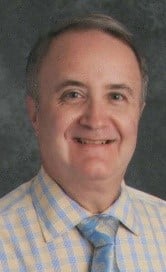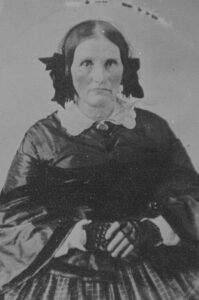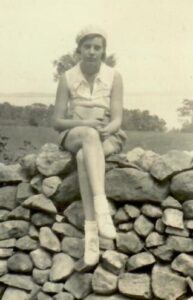Recently, as I completed my Census 2020 information online, I wondered how many people like my elderly mother – who has never been online – would bother to complete their questionnaire if they did not have someone to do it for them. Without the personal contact of past censuses, how many people will be missed?
Right after the release of the last two censuses, 1930 and 1940, I asked friends and family recorded in their youth if they would like to see how they appeared. Sometimes what they saw was expected; other times it jogged a long dormant memory: “Oh, I had forgotten that Uncle Henry was living with us at that time.” Nonetheless, we all have our own examples of lost relatives in censuses. Were some of our ancestors truly not recorded? Did they slip through the cracks? Or is it that we just have not looked hard enough?
Let’s consider the first example of my grandmother, Lois Rhodes, who would have been 21 at the time of the 1930 census. In May 1929, she graduated from Truesdale Hospital School of Nursing in Fall River, Massachusetts. Shortly thereafter she undertook a series of private duty cases rather than work in hospital wards. Where? remains the question. She was not counted with her parents and siblings in Wareham, Massachusetts. Did she follow my grandfather Emory Morse, a childhood sweetheart, to New York City? He once told me he left home “right after the Crash of ’29,” but in the 1930 census, accurate or not, he was counted with his parents and sister in Wareham. Forty years after their divorce, it was a bit awkward for me to ask my grandparents questions about their marriage. From separate interviews, I learned from her the date – “Mother’s Day weekend, 1931” – and from him the location: Rutherford, New Jersey. Obtaining a copy of their marriage license, however, did not tell me where Lois was in April 1930, when the census was taken.
I have reluctantly abandoned this quest, chalking it up to my grandmother’s youthful itineracy, but that is not the case with the futile search for Lois’s great-great-grandmother, Bethiah (Phinney) Hall. Why haven’t I been able to locate her in the 1870 census?
By the time Bethiah, age 55, born in Maine, wife of Silas Hall, appeared in the New York City 1850 census, she had given birth to 12 children and lived in ten places. Two of her daughters (Mary and Lovicy) and two sons (Lewis Nathaniel and William Albion Hall) had already married. Her three youngest children – Arial, Susan, and George – lived with their parents in addition to newly-married daughter Adeline Downs and her husband Jeremiah. Ten years later, while husband Silas lived bigamously in Wilmington, Massachusetts, with another wife, Bethiah, recorded as “Battie” Hall, moved to Providence with sons Arial and George and granddaughter Adaline Downs, whose mother died after her birth in 1853. To my vexation, I have not located Bethiah again until the 1880 census, when she was recorded as age 89 [sic], birthplace New Jersey [sic], living in her daughter Susan (Hall) Thomas’s household on Block Island.[1]
To my vexation, I have not located Bethiah again until the 1880 census...
Working back from that, the logical place to look for Bethiah in 1870 was with one of her children. All these households were checked to no avail. Son Arial Hall died in 1869; his widow and children lived in Mattapoisett; son Lewis Nathaniel Hall lived on Block Island, daughters Lovicy Paine and Susan Thomas in Fairhaven; daughter Mary Dunning in Harpswell, Maine; son John Phinney Hall in London, England; son George Hall likely in San Francisco. Considering that Bethiah raised her granddaughter Adaline Downs, I thought if I found Adaline in 1870, I would find Bethiah. I did Adaline, age 17, servant, in New Bedford—but not Bethiah, even after looking at every household in New Bedford and Fairhaven.
Surely Bethiah, age 75, I reasoned, would not have lived on her own somewhere apart from her children. Twenty years ago, the 1870 census was not fully indexed nor linked to images. Heritage Quest began to release a series of census CD-ROM indexes for every state, which included (beyond the heads of household) the names of all men over 50 and women over 70. I bought each CD-ROM as it was released, searched all women by age, birthplace, and every variation of Bethiah and Hall. Truly, my persistence crossed the line into obsession. All that time and expense, all for naught. Why can’t I just let this one go? For all the same reasons that so many of us keep searching for those lost souls. Bethiah had three children whom I cannot document in 1870. If I find them, I still might find her. In the meantime, this full-plate ferrotype has pride of place over the piano, a reminder my quest is not finished.
Note
[1] For more details, see Michael F. Dwyer, “The Return of Reverend Silas Hall”, The Maine Genealogist 31 [2009]: 147–65.
Share this:

About Michael Dwyer
Michael F. Dwyer first joined NEHGS on a student membership. A Fellow of the American Society of Genealogists, he writes a bimonthly column on Lost Names in Vermont—French Canadian names that have been changed. His articles have been published in the Register, American Ancestors, The American Genealogist, The Maine Genealogist, and Rhode Island Roots, among others. The Vermont Department of Education's 2004 Teacher of the Year, Michael retired in June 2018 after 35 years of teaching subjects he loves—English and history.View all posts by Michael Dwyer →

